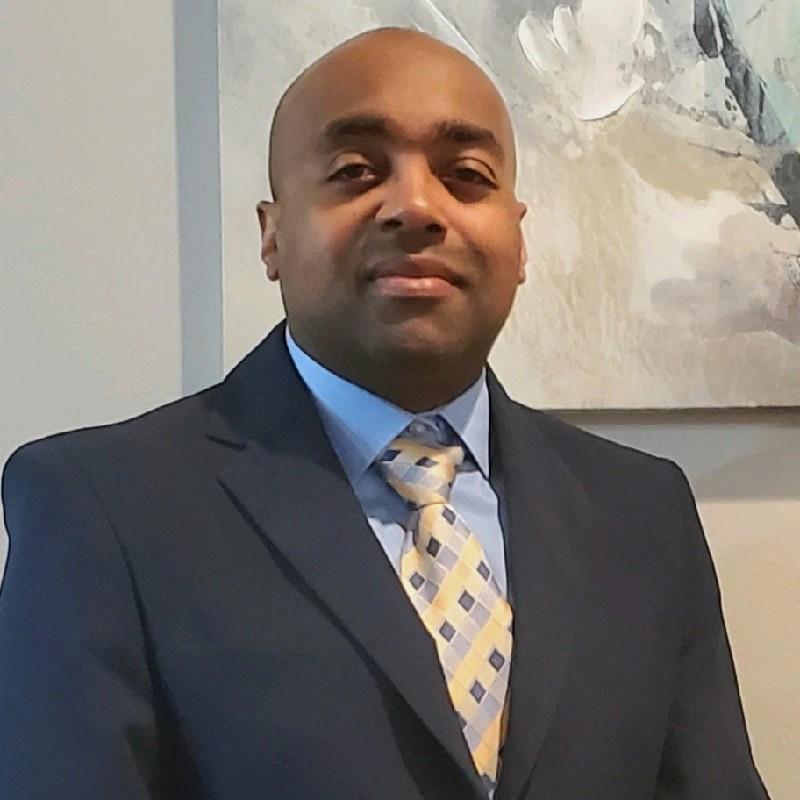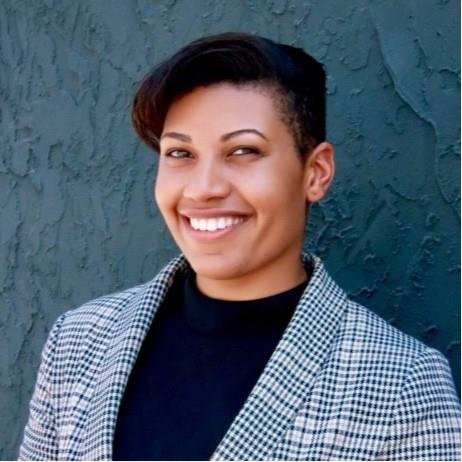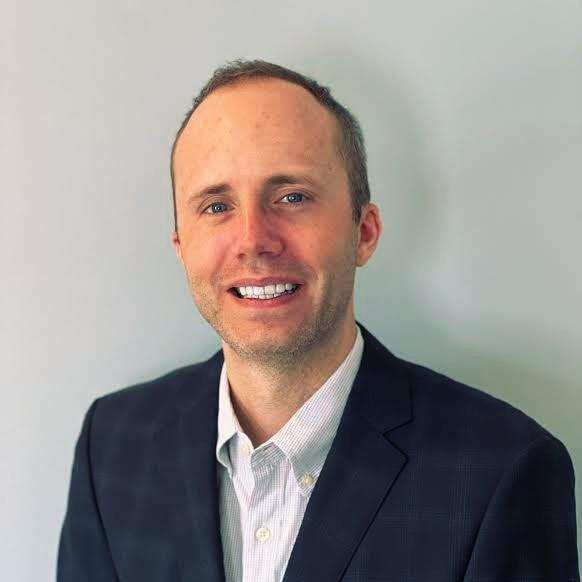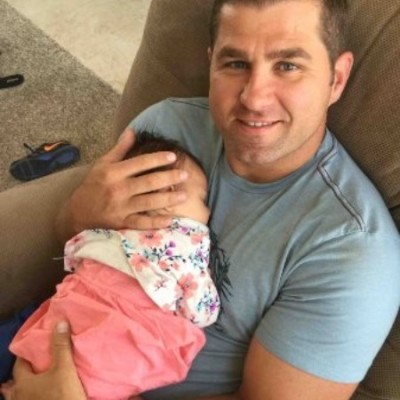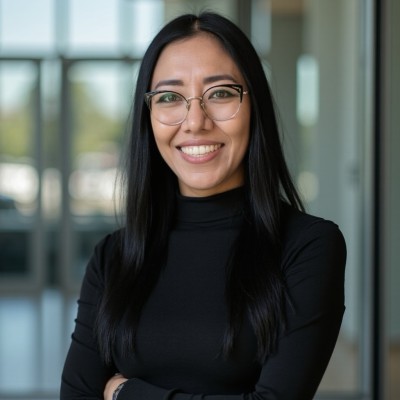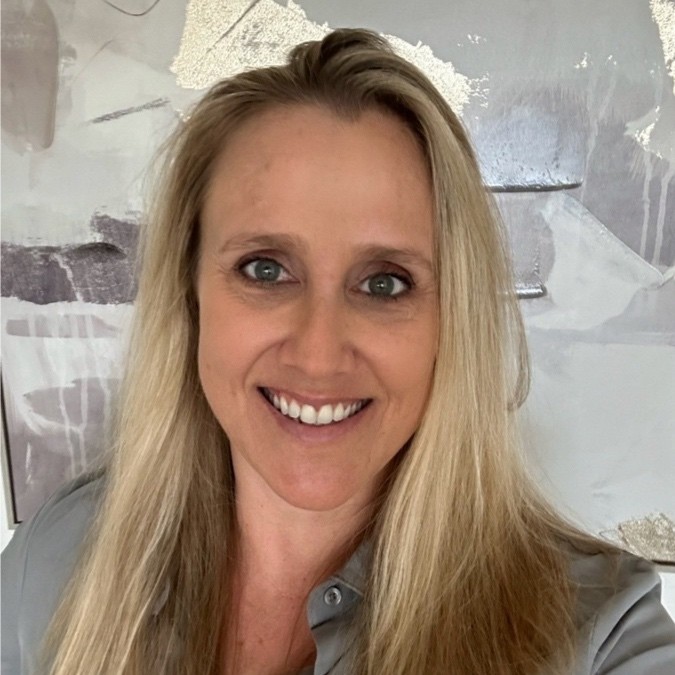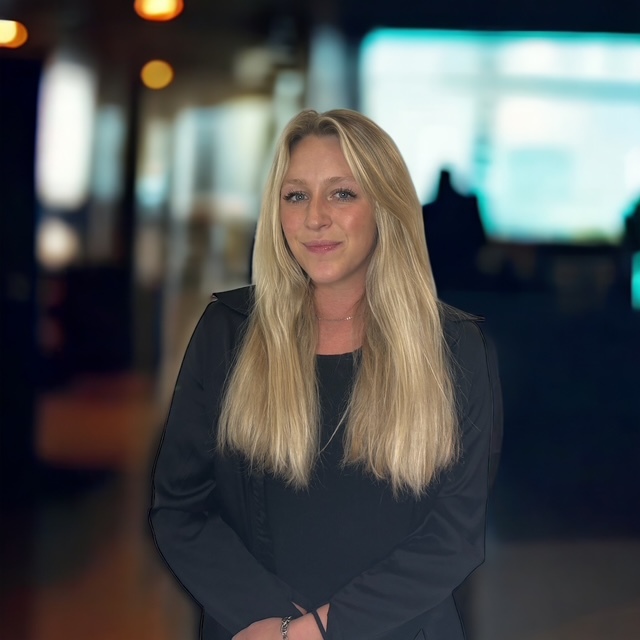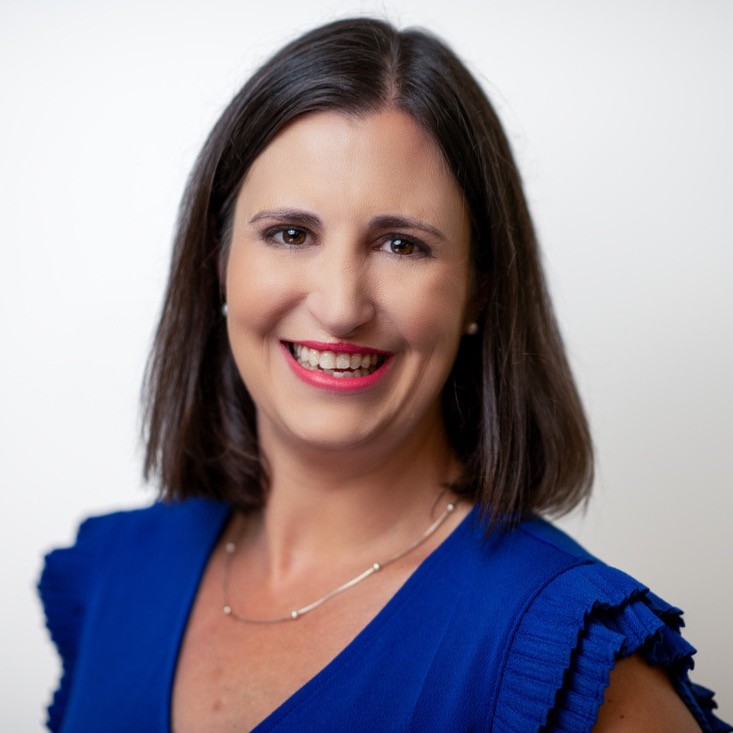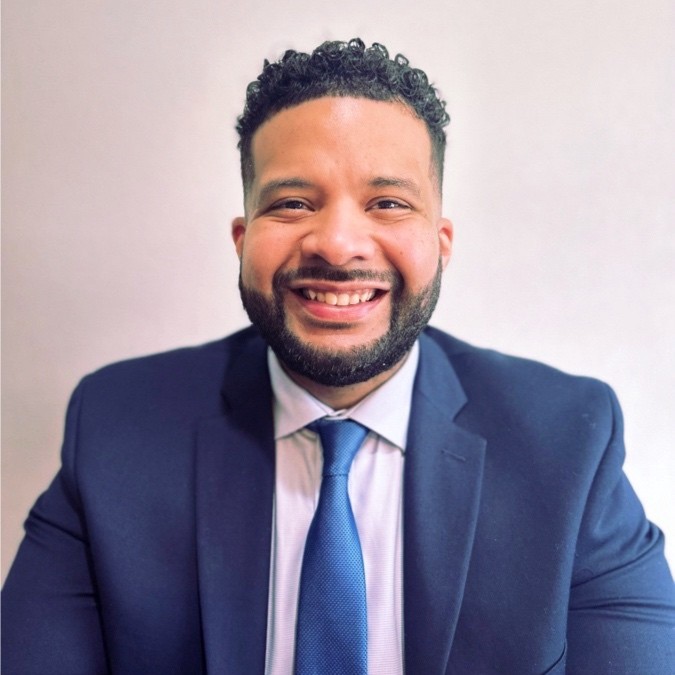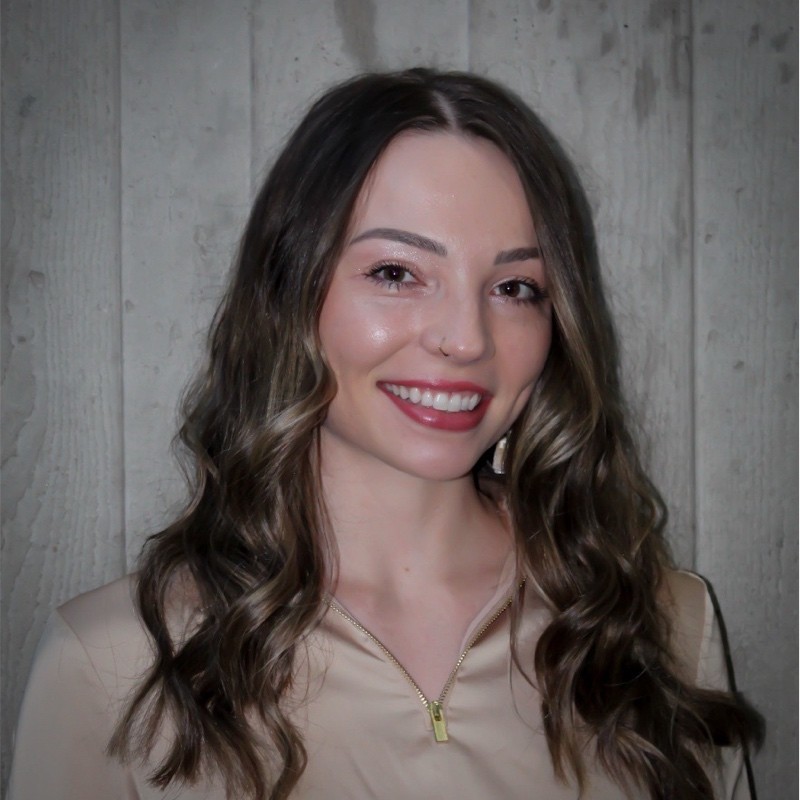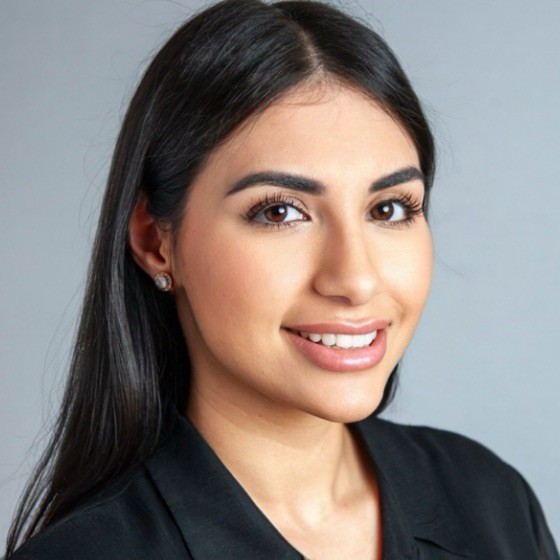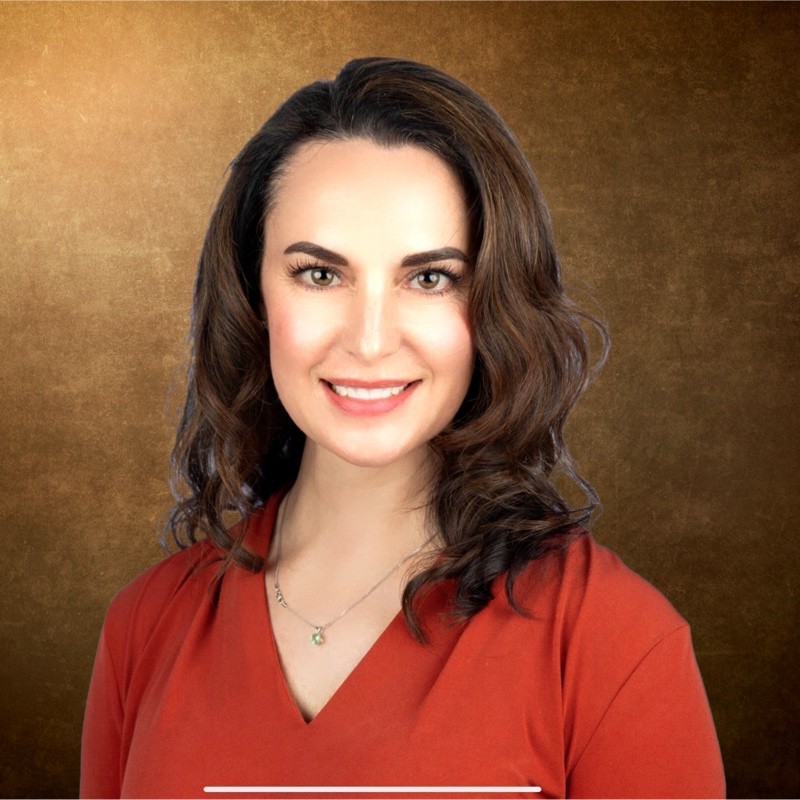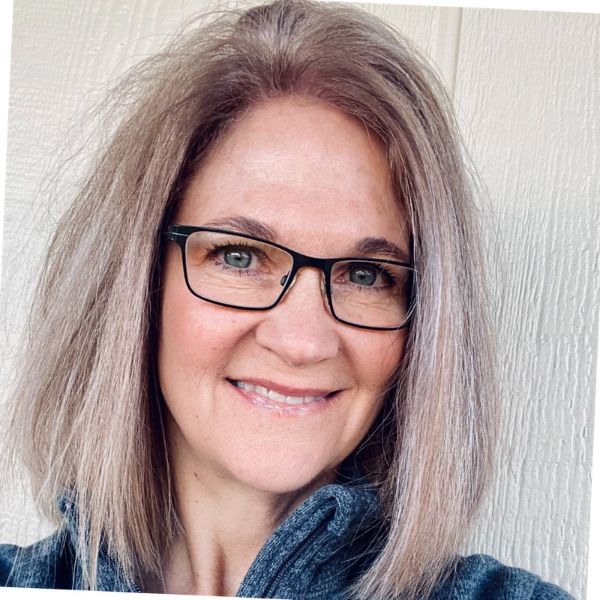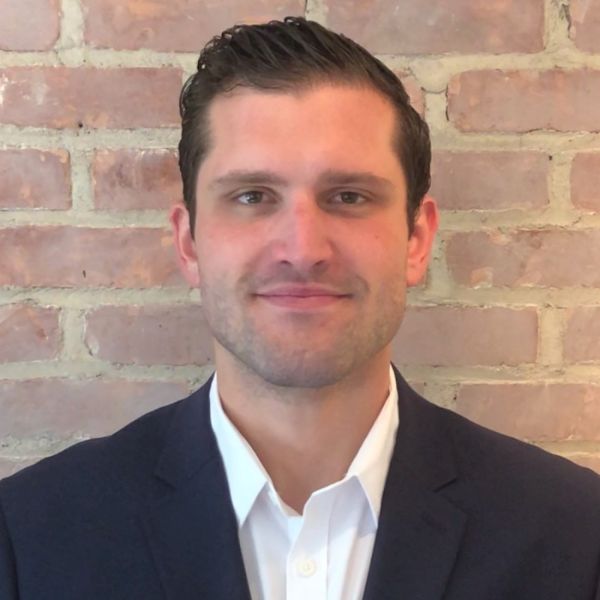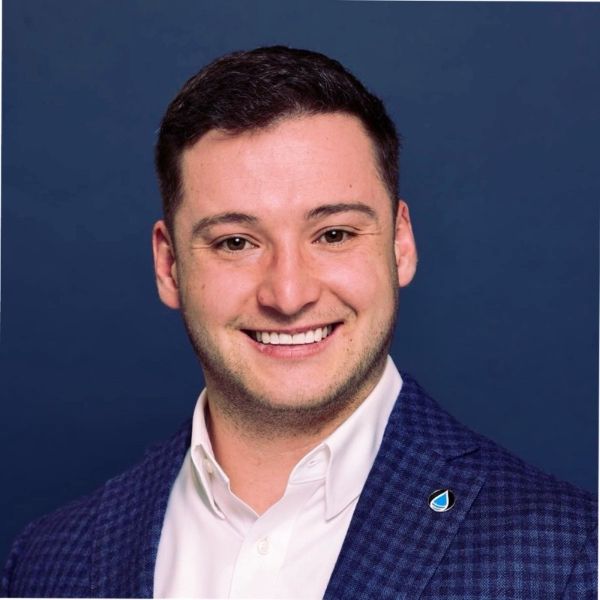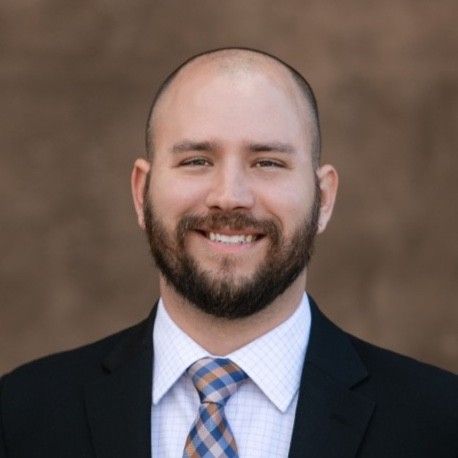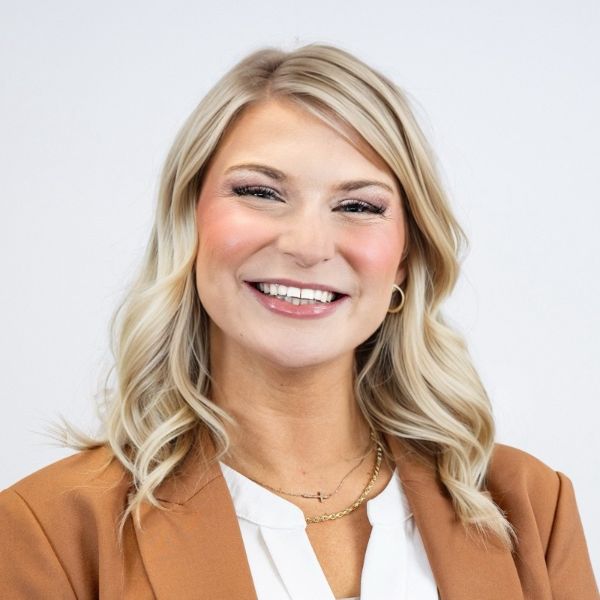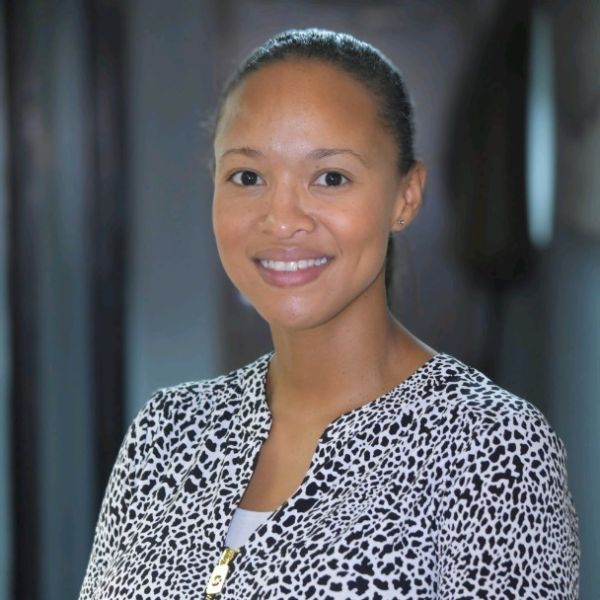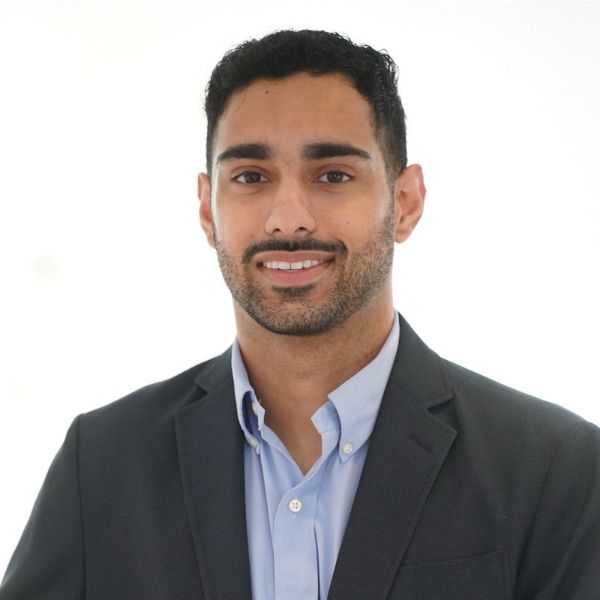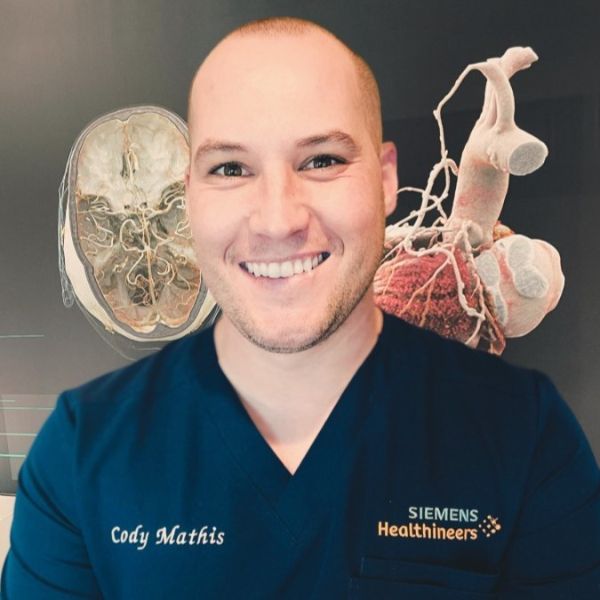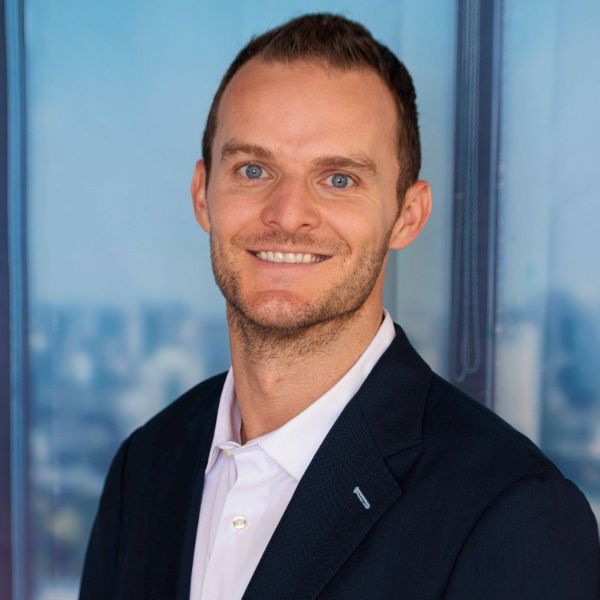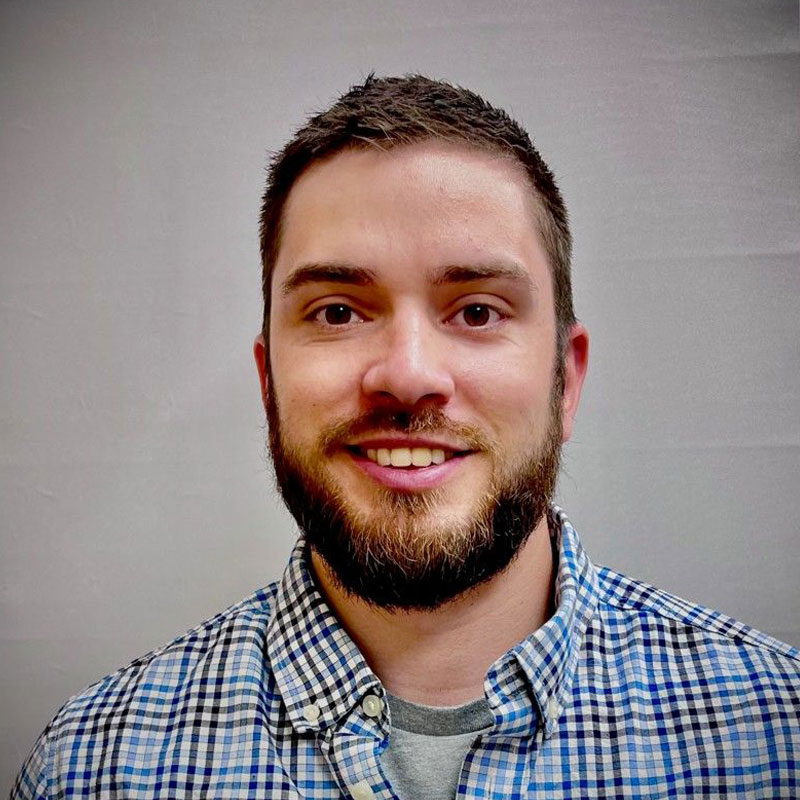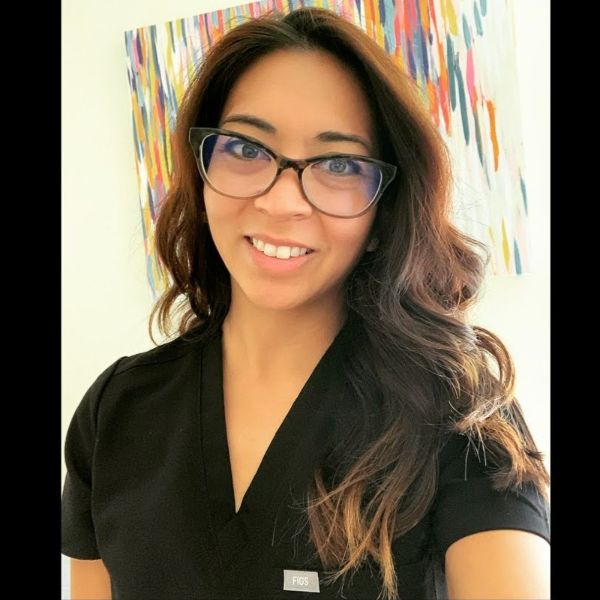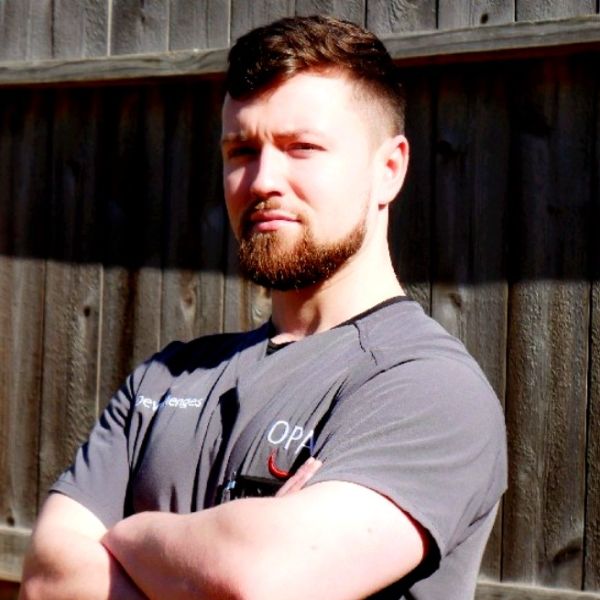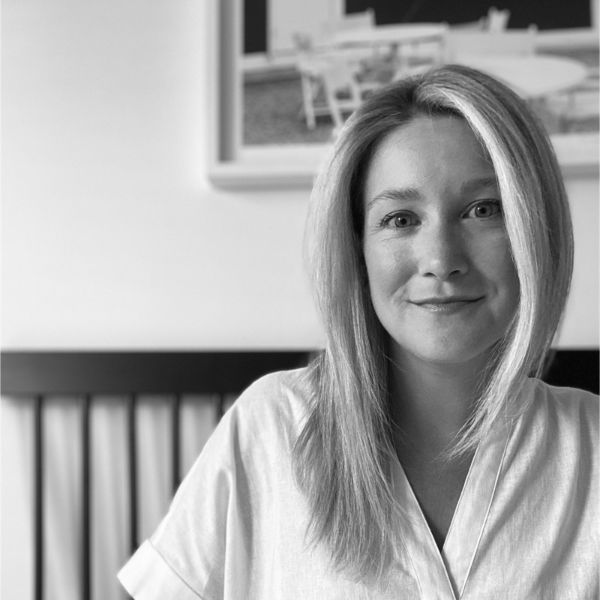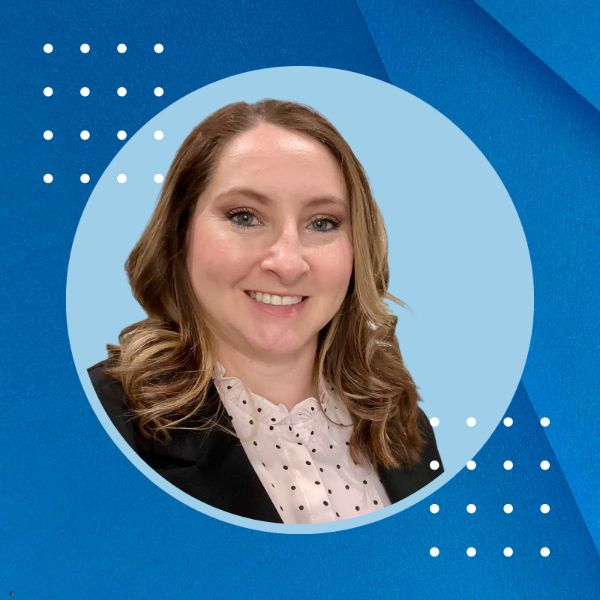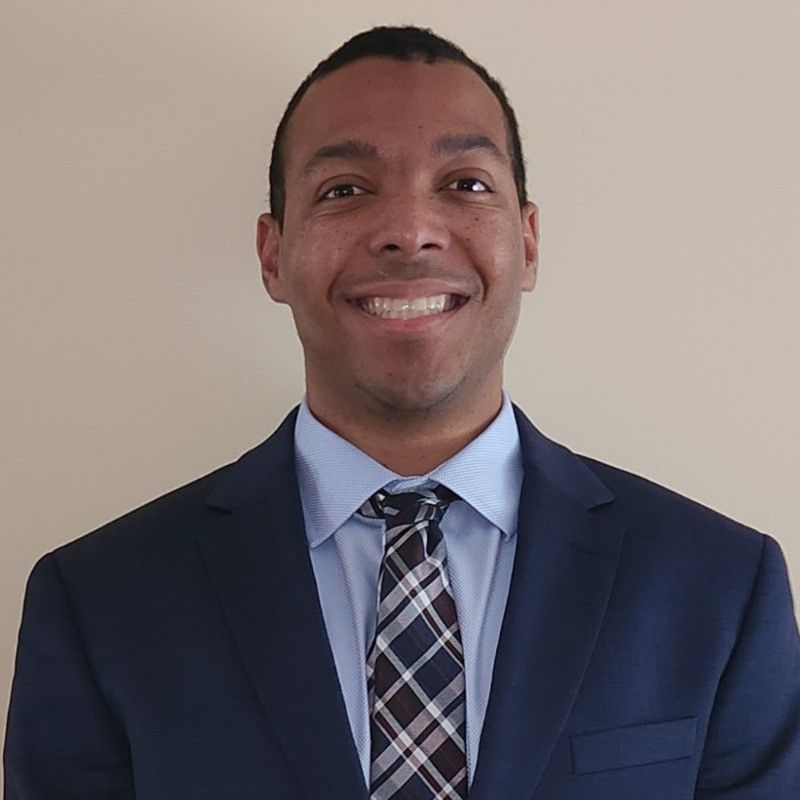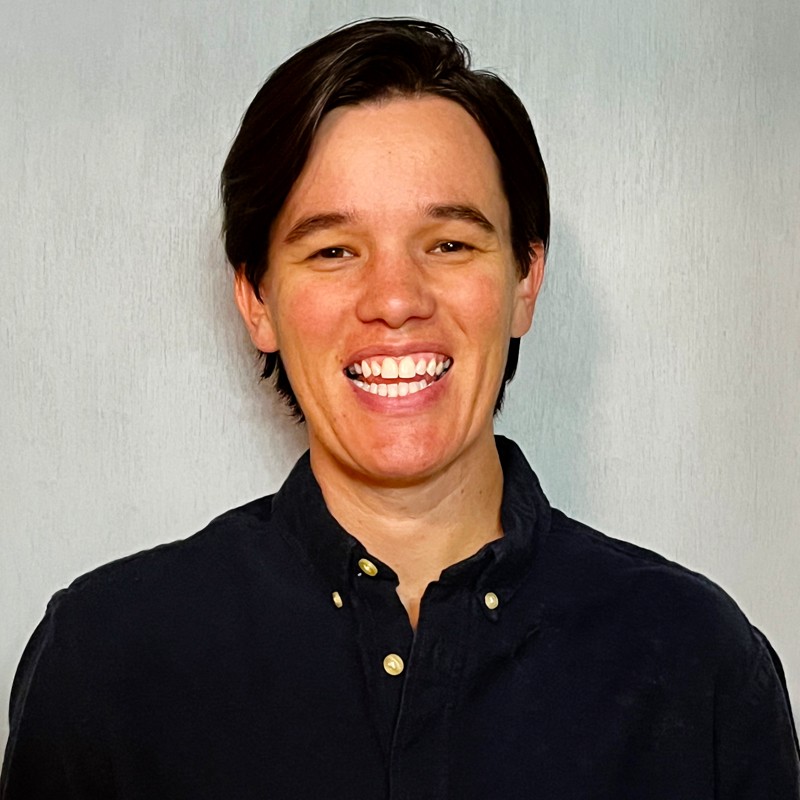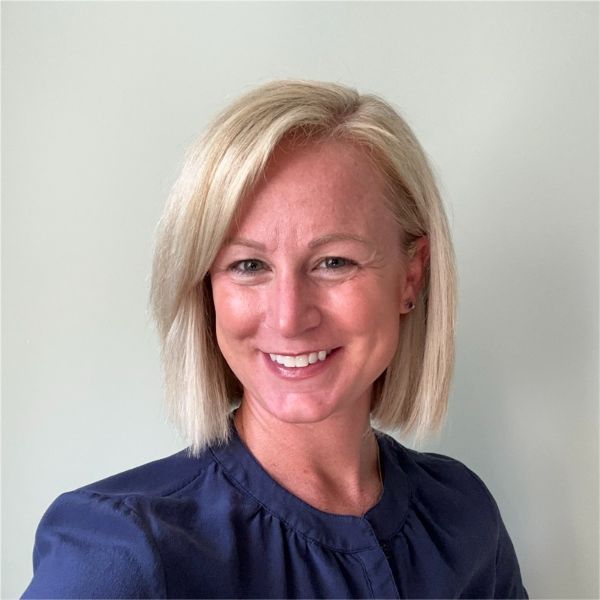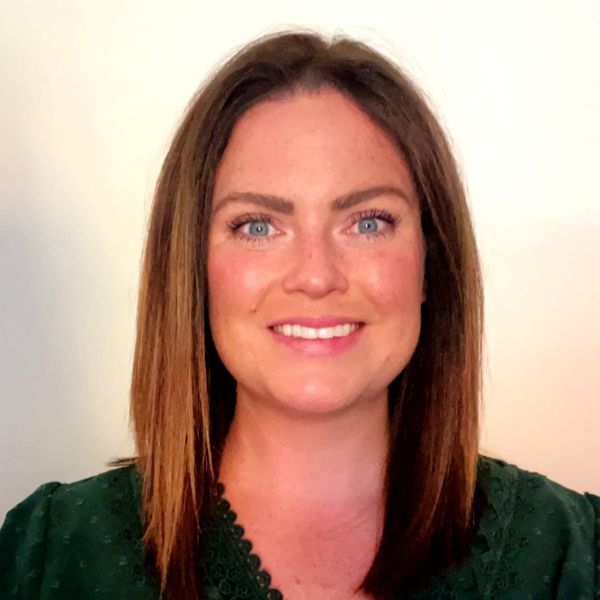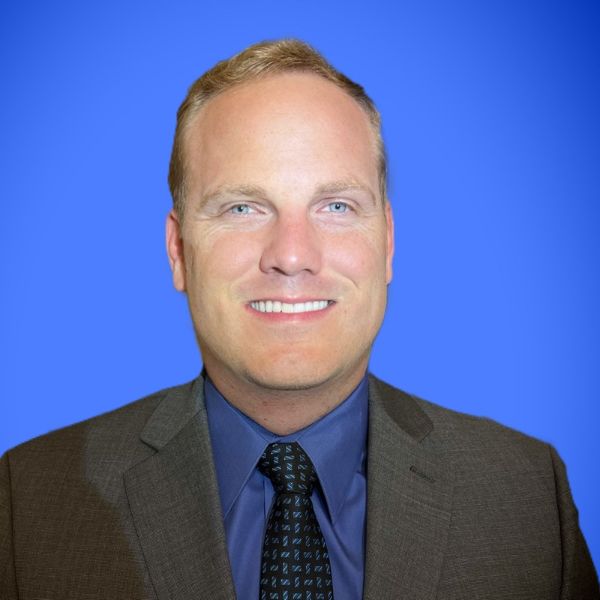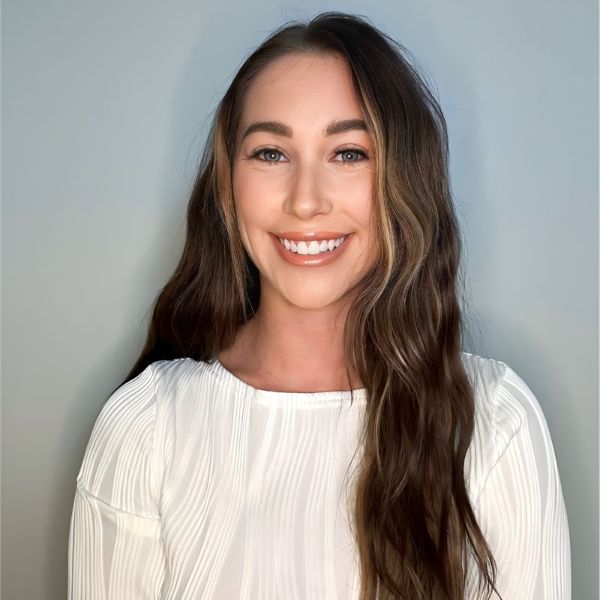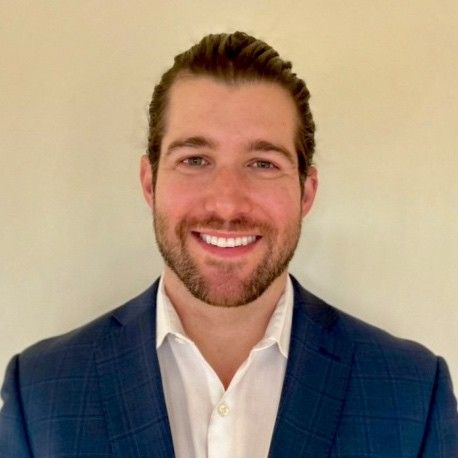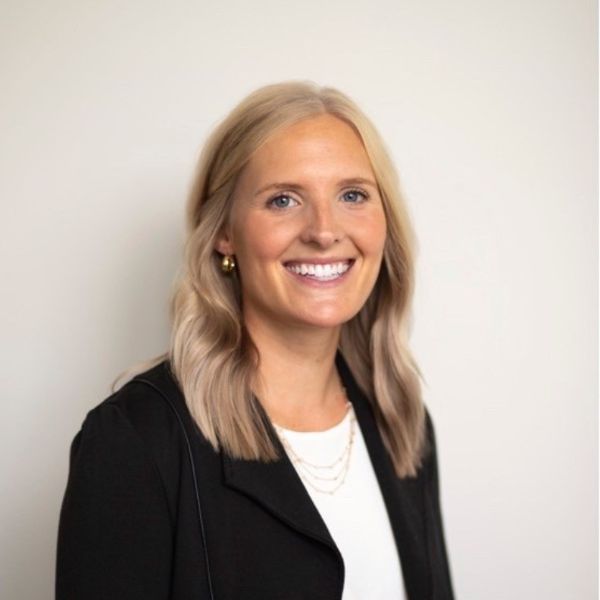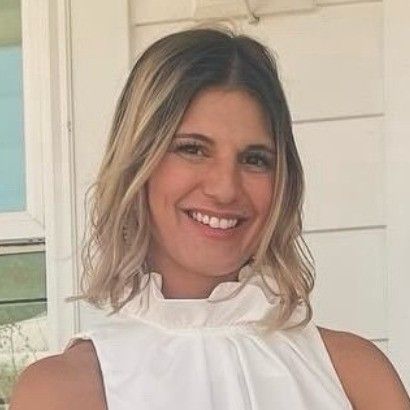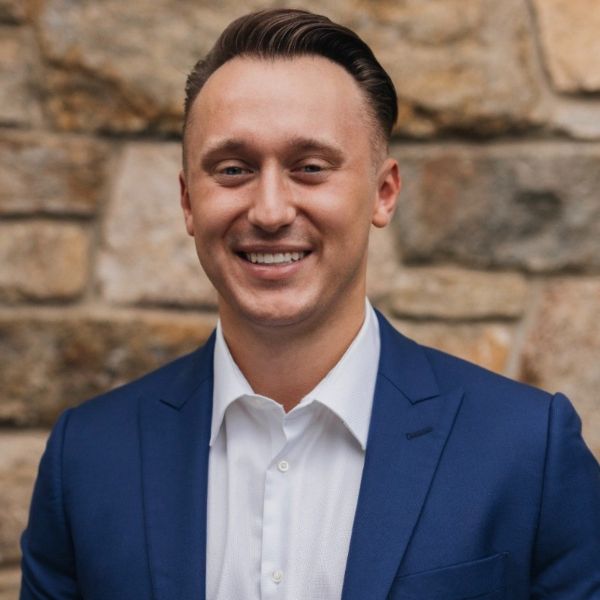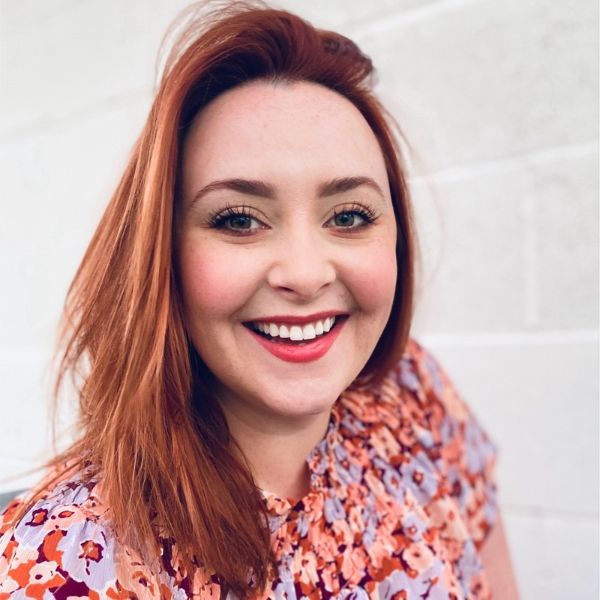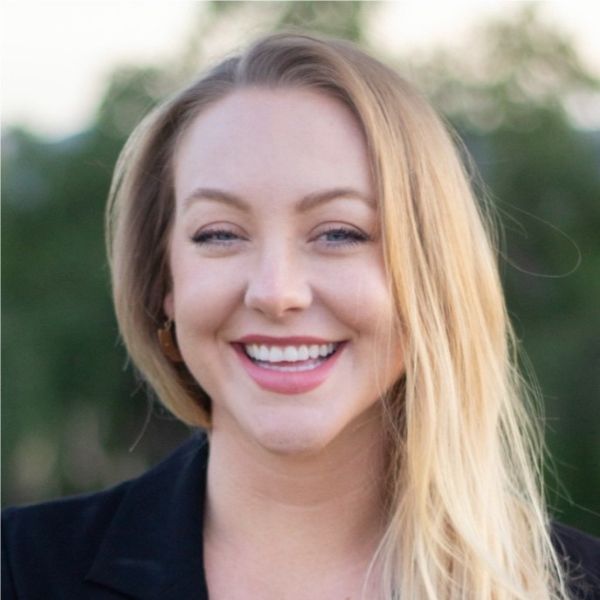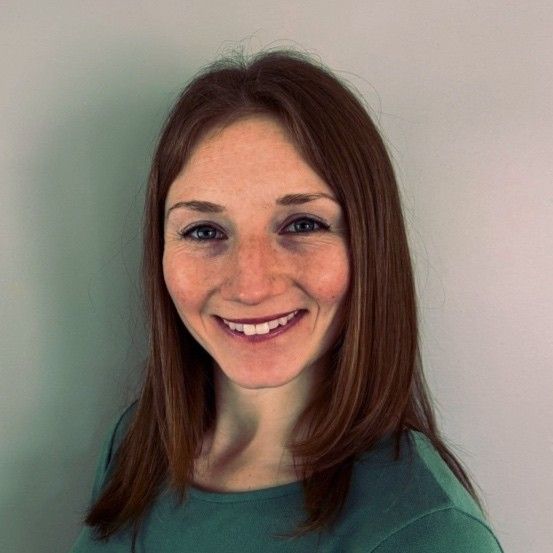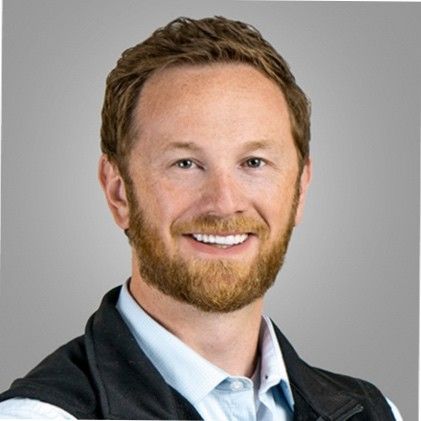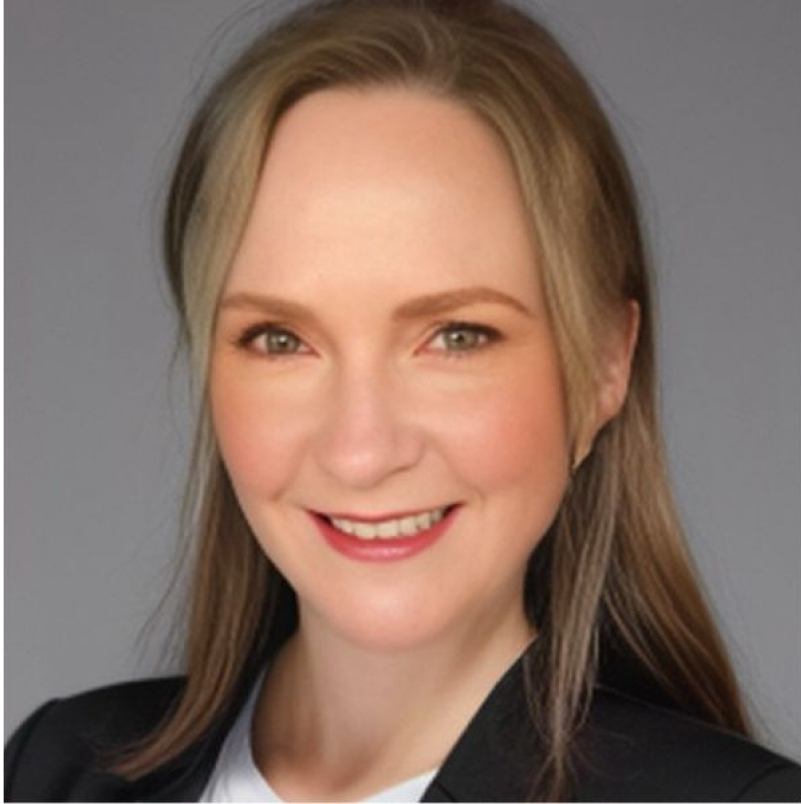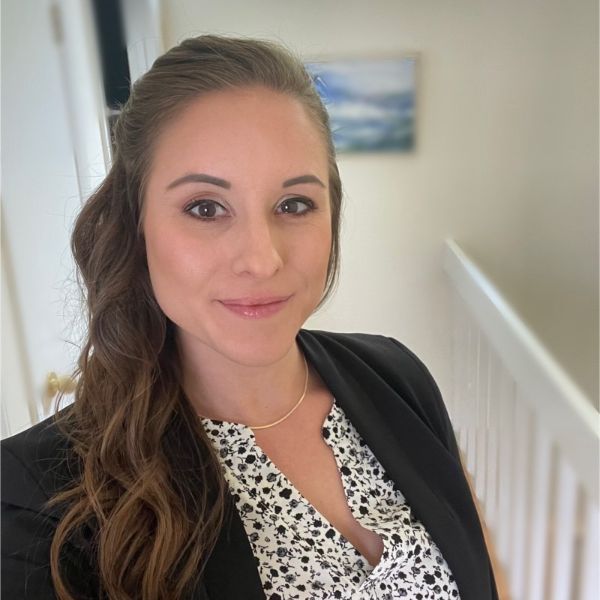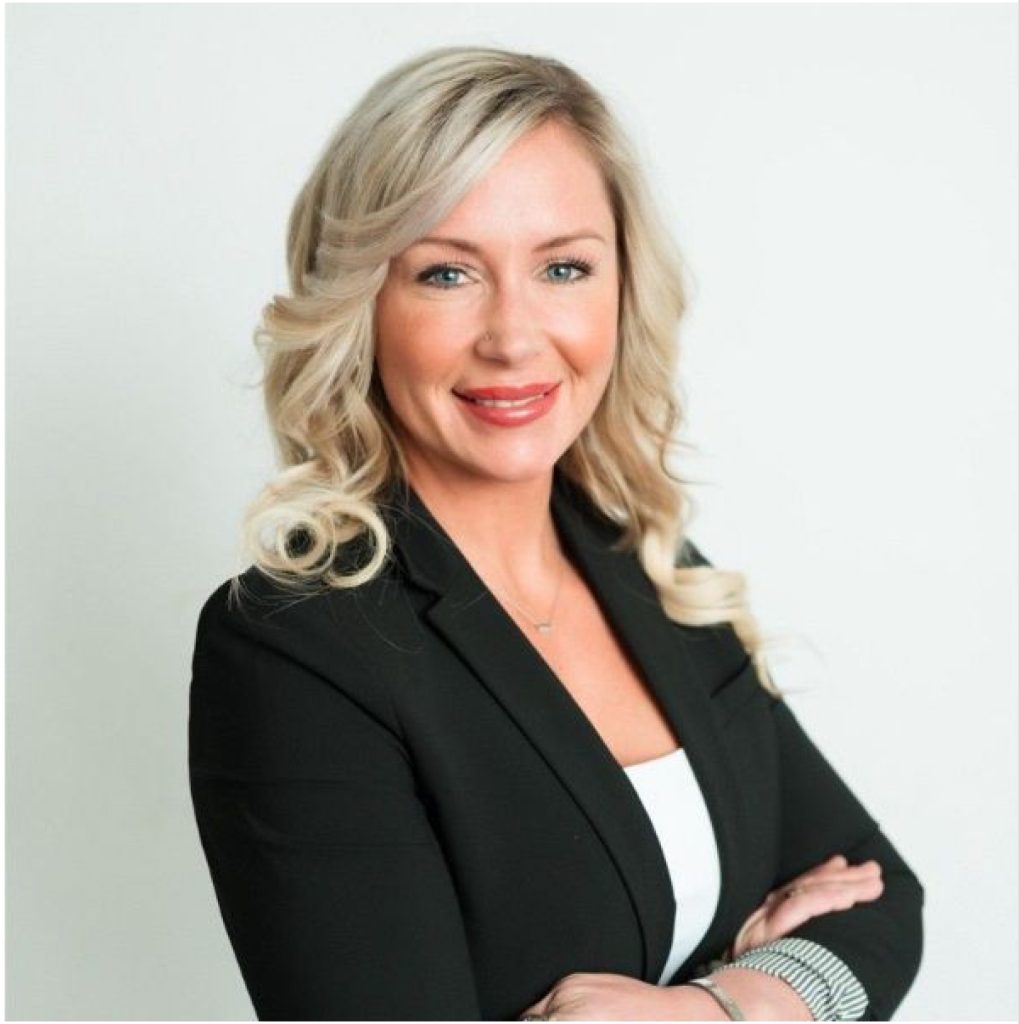The New Era of Healthcare Sales
In this episode of the Medical Sales Podcast, Samuel sits down with Steven King, president of a U.S. medtech company transforming medical education through cutting-edge virtual dissection tables. Steven shares how this groundbreaking technology is changing how anatomy is taught—replacing traditional cadavers with 3D, interactive digital models that bring the human body to life. He reveals the challenges of scaling in a market where most institutions still don’t know the tech exists, how AI is shaping the next generation of simulation learning, and why funding and awareness remain key hurdles. From selling $100K medical education tools to leading international expansion, Steven breaks down what it takes to grow a startup, build customer trust, and bring innovation into classrooms and hospitals worldwide. The conversation closes with powerful lessons on empathy, listening, and genuine human connection—skills every medical sales professional needs to master.
Connect with Steven King: LinkedIn
Connect with Me: LinkedIn
Love the show? Subscribe, rate, review, and share! Here’s How »
Watch the episode here:
Or Listen to it on your favorite platform:
Episode Transcript:
00:05 – Samuel Adeyinka (Host)
Hello and welcome to the Medical Sales Podcast. I’m your host, samuel, founder of a revolutionary medical sales training and mentorship program called the Medical Sales Career Builder, and I’m also host of the Medical Sales Podcast. In this podcast, I interview top medical sales reps and leading medical sales executives across the entire world. It doesn’t matter what medical sales industry from medical device to pharmaceutical, to genetic testing and diagnostic lab, you name it. You will learn how to either break into the industry, be a top 10% performer within your role or climb the corporate ladder. Welcome to the Medical Sales Podcast and remember, I am a medical sales expert, sharing my own opinion about this amazing industry and how it can change your life.
00:50 – Steven King (Guest)
So we’re really now focusing on medical education. So when you look at people who are trying to become doctors or who are nursing EMTs, there’s a ton of it out there. They have to take anatomy and physiology at some point in their careers, and some have to take it more extensively than others, right and so right now, the way that it would work is historically if you’re going to work on a cadaver, you go into a cadaver lab and you get to work on these things that they don’t smell good. Number one they’re monochromatic in nature. If you look at a muscle, an artery, a nerve, a vein, it’s all sort of grayish, yellow in color.
01:28 – Samuel Adeyinka (Host)
It’s very hard to determine one from the other, so they’re labeling and they’re working on that it doesn’t simulate a live body.
01:34 – Steven King (Guest)
No, it does not, and so there’s a bit of a challenge there. So what we have is a virtual dissection table, so it is a table the size of a regular dissection table. So it is a table the size of a like a regular dissection table that if you walked into a regular dissection lab, there would be a body there. But what you do is you power this thing up and then, as you’re looking down at the screen, you have different models, either a male, a female. We have pediatric male, pediatric female, we have a pregnant female, for example, and they power up and then they’re just. You’re interacting with them three-dimensionally and you can take your finger and use it as a scalpel, slice into it, remove things, wait, wait, wait. So it’s like a hologram in a way, but it’s.
02:17
It’s solid, not like a hoax, so it doesn’t like beam up off of the table. You’re looking down at the table and it’s almost as if you’re looking at a person and instead of having three people to roll the cadaver over, you just take your finger and literally rolls the cadaver over and it’s real.
02:33 – Samuel Adeyinka (Host)
Is it a solid mass of something like some light?
02:36 – Steven King (Guest)
that’s what it looks like I mean yeah, I mean it emulates that. It looks like it is. I mean, it’s all visual, so it’s all 3d recreated right in front of you and so then, you can pull it up and turn it around and look at it and dissect into different structures.
02:49 – Samuel Adeyinka (Host)
I imagine one of the benefits to having a cadaver is the actual solid entity of a cadaver that you can cut into and whatever you do how does this?
03:03 – Steven King (Guest)
that’s a point. So there is a tactile necessity of working on a cadaver right, and that’s when you’ve determined hey, this is what I’m going to be going into, this is my path, where I’m going to go. In Europe, for example, in underclass studies on medical, on the medical side of things, they’re trying to move away from cadaver dissection altogether because the students aren’t going to be going in and those particular students at that level, before they then decide which path they’re going to go into maybe surgery or whatever they need to learn anatomy and physiology and they’re not learning it that well in a textbook and then going looking at a cadaver. That’s all one color and cadavers can be expensive. You have to maintain them and if somebody comes in and makes a mistake on a cadaver or cut something wrong and let’s say you just got that cadaver last week, well, you’re going to have it for another six months, but that the error is also going to be there for the next six months. So if you have something digital, people can come in explore it. It’s the full color, it’s everything. I can understand what the pancreas is as compared to the duodenum, or I can understand the pancreas compared to the transverse, colon and all of these things now and clear, and then when I go in and I go to the cadaver, now I have a better understanding of what I’m doing. So if you truly are going to be moving towards needing to work on cadavers, you can use something like a digital cadaver to really learn anatomy and physiology first and then go over and work on a real cadaver.
04:25
The problem with us as human beings that we are, we’re layered beings, right, so we have our skin and then you’re going to go past the skin and you’re going to go past that and you get your muscles and you get your arteries and veins and everything within there. And so think about your, your gut and your stomach and all that that’s. That’s another great example. Everything is all compacted and all tied together and if you just looked at it well, that’s a small intestine you say, yeah, but which part of the small intestine is that? The ileum, the jejunum, it all looks the same. And then, if you could rotate it around and look at it three-dimensionally, you’d understand where it sits in relation to the kidneys and all this type of stuff. Yeah, you can’t do that in a textbook and it’s really difficult to do on a real cadaver. So having a digital dissection table actually allows you to do that.
05:07 – Samuel Adeyinka (Host)
And I imagine you could probably upload like different disease states and show exactly how it impacts whatever part of the body. Yeah, Wow, that’s cool. How long has this been around Is this like? Am I late to this?
05:20 – Steven King (Guest)
So that’s the interesting part of this is that people don’t know that this is around. Some do. It’s been around for a while, I mean. So really, the market the group that brought it to market brought it probably 10 or 11 years ago now, maybe 12 years ago, okay, but it was very slow going. And then only in the last five years did it really take off, where we tried to scale the organization, put a lot of things in play to really grow the business and, for example, when I got there, we were doing around 18 million in sales year over year. And then in my last year we did like 76 million.
05:57
And so in that business that’s a business where you start over from scratch every year, by the way. So it’s not like you went 18 million and then my first year there we did 27 million and then it was like okay, so you went from 18 to 27. So you grew. You know what is that 9 million? No, we stopped and we went to 27 million and last year we did 18 million and then the next year we started from zero and then we went up to like 45 million.
06:22
And then the next year we started and we went up to 24. Yeah, weren’t it done? It can be one and done, and you’re hoping that you know as you. One way to scale it right is to go back to your existing customers and say, look, you’ve got a single proof of concept, but you’ve got a hundred students coming through, so why don’t we talk about, you know, putting more of these in place or creating a lab or something like that? And then then you are. You know, around 30% of the orders that you get every year are from existing customers who want to buy a branded unit or maybe the school itself.
06:52
Like let’s take a giant university medical school. They have one in the nursing program, but they don’t. They don’t have one in the anatomy program. Or they might have one in the anatomy program but not nursing and not PT or not medical. So you can have all of these different divisions within a medical university that could end up buying it because the other division has it and they don’t. And sometimes they don’t even know. And, to your point, you didn’t know it was there. We talked to schools, we’ll be at a trade show or something that I didn’t even know about this. I’ll say, well, you should go over to the nursing program, because they have one. I didn’t even know about this, and I’ll say well, you should go over to the nursing program because they have one.
07:26 – Samuel Adeyinka (Host)
How much do one of these for lack of a better word devices cost?
07:31 – Steven King (Guest)
Yeah, so you’re anywhere from $50,000 on the lower end up to $80,000 to $100,000 for a single unit.
07:41 – Samuel Adeyinka (Host)
And I imagine the customization of the unit is what determines that range, where it falls in that range.
07:48 – Steven King (Guest)
Yeah, to two degree. Exactly the different types of models. So you can get one that just lays absolutely flat and you walk up to and it doesn’t. You know, that’s all it does, but it still has all the content on the inside. Or you can get the ones that actually they’ll convert to an upright position so you could take that table, instead of looking at it flat, point it towards an audience or something like that, if you wanted to. And then you have smaller versions that are just like a single type screen, like a 55 or 65 inch screen, where the bigger ones that emulate a real cadaver table and a real body. You have two kind of 45 inch screens side by side on one table and then you can put head to toe, the entire cadaver on Gotcha and you know, is this like a competitive market or companies left and right making these cadaver?
08:34 – Samuel Adeyinka (Host)
tables and you guys are fighting for market share.
08:37 – Steven King (Guest)
No, and in fact you know, I left my old company in November and I did not know there was anybody else really as a player on the market. I left my company and I started my own consulting organization, really with a focus on AI and how we can do strategic planning using AI and incorporate that into what you do on a business perspective. And so, as I was consulting with other businesses, one night I was just clicking through LinkedIn or something, and something popped up about this virtual dissection table, and I’d been in this market for the past five years and I’d never seen this table. It had never, you know, never come to bite me in the butt, so to speak. So I rabbit holed for about an hour on it and I was shocked by what I was seeing because it was amazing. And so I then just traced it back to where it was coming from, and it was coming out of India. And so I then just traced it back to where it was coming from and it was coming out of India.
09:26
And so I reached out to them. And you know I have a consulting company. So, hey, do you guys want to learn about, you know, maybe coming into the US market? And then they had been wanting to get into the US market for a while. They just weren’t really sure how to do it, and since that had been my focus for the last five years literally that product for five years where I grew the other company from where they were to the, you know, almost a hundred million, they wanted to know how to do that as well. So we started talking and one thing led to another, to where now I’m basically president of their US operation.
09:53 – Samuel Adeyinka (Host)
Look at you, steven, that’s a success story and a half. Okay, so let’s talk about it with this device. You know, I’m just curious. When you guys first entered the american market, what was the feedback? Was it like, oh my gosh, this is just mind-blowing. Was it like you know? Was it give us the you know if you can give us a story, if you have one, or yeah so there’s.
10:16 – Steven King (Guest)
There’s a couple things to to look at. We’ll, we’ll we’ll look at sort of virtual dissection tables in general and how people perceive them and what they saw when they first started seeing them. They were blood, they’re blown away and there’s two parts to it. So you have a full human cadaver in front of you. From people who’ve been looking at a textbook or a plastic model, you know, you go in and you see the skeletons hanging up in the classroom and that’s what they’ve been learning from, and now they have this interactive technology that just blew their minds.
10:45
You’re also now dealing with teachers who are challenged with student engagement, because today’s students are digital natives and they learn differently than from a textbook and things like that, and how you engage that student to learn is critical. So there was two things. Number one the content that they were seeing was blowing their mind. Having an actual cadaver and be able to see it and go through it and remove layers or do whatever you want in full color, was fascinating. But then the other part is you’re now matching to the student engagement level of what they’re doing on their iPhones or iPads and things like that. So it really was a sort of this, a one-, two punch that people really were excited about.
11:27
And then the other part is that, yes, you can take what you’re talking about, any CT or MRI and you can upload that. I can upload. I upload mine all the time and then you can take your own and create it three-dimensionally and look at whatever you want that way. So it’s fascinating to be able to then understand disease states, not just by looking at an x-ray, but maybe taking that not an x-ray, but a CT or MRI, converting it to three dimensions, maybe chopping someone’s head off, going down, seeing the tumor and then understanding what you’re looking at. When you try to actually read an MRI or a CT scan Because those aren’t easy to read necessarily Do you have one in your house? I have the software on my computer. I don’t have the full table in my house.
12:08 – Samuel Adeyinka (Host)
Okay, I was about to say you play with it all the time.
12:11 – Steven King (Guest)
I do, I play with it all the time, right, right.
12:14 – Samuel Adeyinka (Host)
So I guess, if I’m, you can take this to a hospital and, like you said, you used a tumor example. Someone can, a patient can come and say I have this, you can take the ct and mris and everything needs to be done. You can take it to this and then literally see what, what it could look like in the body with this, with this device. Correct. How often does that be utilized today?
12:40 – Steven King (Guest)
not very often, and here’s the thing that a lot of people don’t know that type of a program the ability to take a CT or an MRI and convert it back to a three-dimensional aspect is not unique. There are programs. You right now, after we talk, can go and download a program that will convert CTs or MRIs to 3D and then you could just do it on your own computer. All we’re doing is we’re taking that and putting it on our table to be able to to help students learn. You can make it life-size, but you can also. You know, most of the time you won’t get a full body ct or an mri. I mean, that’s a lot of, that’s a lot of things happening. So you don’t do the full body, you isolate it to the head, the arm or whatever it is. Your problematic area is but but to be able to have it as a teaching option. That’s really where the game changes, because when you’re trying to read a CT or an MRI and I’ll give you a perfect example of this is that I recently had an MRI done it was about a year and a half ago and when we got the MRI done, I went back to the osteopedic doctor who was going to be working with me, me, and it’s at my right hip. And he says, yeah, I gotta be honest, I’m not great at reading mris. And I was like, okay, and I said osteopath, I meant orthopedic. So the the orthopedic surgeon tells me he’s not that great at reading mri, because I’m gonna, I’m gonna send you out to a buddy of mine who’s better at this. And so what that shows you is that you know this guy’s good at what he does. He can go in and do a full hip replacement or knee replacement or whatever you want, without but understanding what needs to be done first has to be sent to somebody else to really read the diagnostic tool.
14:16
So I told him at the time. I said, not a problem, I’ll, we’ll look at it. And so I pulled it up on my system three-dimensionally, kind of, cut through it and looked at it. And so I pulled it up on my system three-dimensionally, kind of cut through it and looked at it. He’s like, yeah, that’s an issue. So it’s just interesting. The technology is there. Some hospitals use it, some don’t. But you know we try to use it as an educational tool for students to be able to comprehend what they’re seeing on an MRI and then convert it to like 3D and understand what that looks like.
14:42
So what’s the biggest challenge then, you know, with mass utilization of this tool, yeah, so I mean, a big part of this is do people know about it, right? And so when you know, anytime you’re trying to scale an organization or a product or whatever it may be, the first thing you’ve got to do is step back and understand you know, who is our ideal customer profile, who’s that ICP? And if you haven’t defined that, you’ve got to figure that out. And if you’re bringing a product to market, you’ve just never, no one’s ever, seen it right, then you’ve got to do some research and dig in, see what kind of like products are out there. Like. This is where the AI can come in and really help you out today, because it can run an analysis for you. Your guest was even talking about giving me a 30, 60, 90 plan. Maybe I go in and I look at the market analysis first. Well, you can do that. And then you’ve got a pretty quick glimpse of that. But then when you look at that, you’ve got to see okay, when I look at what we have, where is everybody on my path of sort of a general sort of customer journey, meaning, are they totally unaware or are they gone from unaware to aware? And if they’re aware, then are they interested. And then they go from interested to evaluate and then from evaluate to either purchase we get closed one or say no, we don’t want to do it, and it becomes closed loss. And then, once they have evaluated and purchased, do they incorporate it to what they do? Because somebody who buys what you have but they don’t actually start to incorporate it to what they do, that’s a bad fit customer. And then, number the very last part of that is are they becoming advocates for you and selling it for you so that customers be get more customers? And so when you look at that journey, number one who is my ideal customer profile? Who are the people that seem to adopt this technology or this type of product right away, or who have been purchasing it? And then, where are they in the world? What’s my total accessible market look like?
16:32
And then if I say, okay, what, where, where is everybody in that path? And I let’s just pretend most of them are unaware, because that’s kind of where we’re at they’re unaware and we got to get you from unaware, aware, interested, at least to begin that journey. Now I’ve got to look at that and say, okay, in my unaware steps, what steps do I have to take to get people from unaware over to aware? Is that cold outreach? Is that a sales team? Is that an SDR team? What does that look like? And then, once I have that established, then I say, okay, once they’re aware, what are the steps I have to take to get them interested? Then I say, okay, once they’re aware, what are the steps I have to take to get them interested? And then you map all that out and then you say, okay, what resources do we have to have for each one of those sections to fall into play so that we can get to where we need to be? And you have to have identified where you’re going to be.
17:20
So let’s just we’ll take a round, very easy, and we’ll say $5 million. I want to do $5 million in sales this year. So if I sell an average unit let’s say $50,000 per unit I have to sell 100 units this year, right? So that’s very easy math. We’ll just keep it that way. So if I go back to unaware, aware, interested, evaluate and purchase, how many do I got to get pushed through that cycle to get to 100? And what resources do I need to get that? How many leads do I have to have? How many leads have to convert? How many will convert to opportunities to deal, so on and so forth, and then you can just backpedal from 5 million all the way down to where you’re starting to know everything that you have to have in place. Anybody can do that with anything, no matter what they’re selling, and that’s just what we’re doing right now.
18:09 – Samuel Adeyinka (Host)
So, with that being said, and with getting past people not knowing about it once people know about it, what has been the biggest challenge with selling this?
18:18 – Steven King (Guest)
tool. Typically it’s going to be funding, right. So not everybody has $50,000 to $100,000 just sitting around in the school piggy bank to go ahead and, you know, throw you some money and purchase this. So they start to look for ways that they can budget for it in the new year. So you’re looking at a long sales cycle as well. It can be 12 to 18 months on the sales cycle. Wow, it can be longer.
18:40
You know we’ve had people come back two and a half years later and say I finally got funding. And here’s this quote. And you got to say, well, that quote was from two years ago, right, right, and you do your best to, you know, get them what they can, but at the same time, you know it can be a challenge for them to find funding. So that’s probably the biggest thing. This probably 85 to 90% of this is paid for through some sort of grants that they go and they’re able to acquire, either from private organizations, public organizations or the government, for example, which does put a lot of money into funding STEM programs and things like that.
19:19
And particularly in this world of healthcare if you look at the decimation of healthcare practitioners over the last four years, it was pretty dramatic as COVID came in and took over. But then if you look at what the forecast is on the amount of people who are going to be sick and the amount of actual healthcare practitioners to take care of them not just doctors but nurses and everything along the way, yeah, there’s a massive gap. So that’s starting to become recognized and the need to train people better, faster, and to elevate their skill sets to fill that gap is starting to be seen, and having technologies that will help get them there is starting to help with this process. So you’ll see monies coming in from the government to fund STEM programs or career and technical education programs, and then the schools will have to go out and try and get them.
20:09 – Samuel Adeyinka (Host)
Now, do you guys help these entities get the funding or not?
20:14 – Steven King (Guest)
your wheelhouse, we can help we can help identify, right, but we can’t help them get it. You can take a horse to water on this one because then you get this gray area and there’s a conflict of interest. So I someone just just this morning I had to write a long-winded email back to somebody saying I can’t write the grant for you because that’s what they wanted me to do and I, you know we just can’t do it. It’s a pretty big conflict of interest for me to write a grant to buy my product yeah, so, okay.
20:41 – Samuel Adeyinka (Host)
So you’re, you’re now, you’re at the, you’re at the table with this company from India that I guess came up with the innovation of this iteration of the product you’re selling, considering you’re there. You’re right there. What does it look like for the next 10 years?
20:57 – Steven King (Guest)
Yeah. So I think what’s coming will be the iterations that AI kind of plays into it. Everybody looks at AI and says, wow, ai is here. Ai is here, yes, but AI is not plays into it. Everybody looks at AI and says, wow, ai is here. Ai is here, yes, but AI is not really here yet.
21:08
We’re only scratching the surface on being able to control and manage AI in a way that’s going to be helpful for us, and I think some of the things that we’re seeing, some of the things happen so quickly and some of the iterations move so fast through the neural networks that they’re learning from and how they’re able to scale the model learning and it’s just amazing. So, for example, last week, soar was announced from ChatGPT as their video. Maybe it was this week, it was on the 6th I think or sometime around that but sort of their new video model. And then Google announced their video model a few months back and now you see, chat GPTs is so much better than that and so nobody really knows how to use it. There’s kind of using them for fun, but they don’t know how to use them for good. Yet People are going to start identifying how they can use them for nefarious reasons. Unfortunately, we’ll start to probably see more of that than we will in the positive, but as we start to understand how to better use that, then we’ll start to see that play a role here.
22:04
So, for example, I might come in and I would like to see the dissection of the right shoulder and I would like you to walk me through the steps necessary to do a right shoulder dissection. And the table says understood, let me pull that up. And then it pulls up a right shoulder and starts to walk you through, step by step, what a dissection might look like. Now the way it currently works is that you come in, you touch a button and you say you know I want to do dissection and you do right shoulder, and then you click it and then it’s a little thing pops up and it says you know, right now, cut along the lines here on the skin. So you take your finger and you make your cuts and then you go to the next step and you go to the next step. But everything is input that way.
22:47
So we’re gonna be moving more towards audio and visual updates and interactions, because that is really the benefit of what AI can do with this Right now, everything that we do is limited by our capacity to interact with the computers. The computers can work like that, but we can’t, because we have to type things in, we have to think, and if we could have them interact with what we think more quickly, then we can get responses more quickly, and that’s why these large language models. It can actually understand what you’re saying and comprehend it. When you say I am, it knows you’re going to say the right after that, and then it can start to put together and understand what you’re saying. Then it can then interact with you in a way that we haven’t been able to do before, and that will enhance not only how we interact with the devices, but how it helps us learn as well.
23:35 – Samuel Adeyinka (Host)
I hope you’re enjoying today’s episode and I want to let you know our programs cover the entire career of a medical sales professional, from getting into the medical sales industry to training on how to be a top performer in the medical sales industry to masterfully navigating your career to executive level leadership. These programs are personalized and customized for your specific career and background and trained by over 50 experts, including surgeons. Our results speak for ourselves and we’re landing positions for our candidates in less than 120 days in top medical technology companies like Stryker, medtronic, merck, abbott you name it. Would you run an Ironman race without training and a strategy? You wouldn’t, so why are you trying to do the same with the medical sales position? You need training, you need a strategy and you need to visit evolveyoursuccesscom. Fill out the application schedule some time with one of our account executives and let’s get you into the position that you’ve always dreamed of. What is the maintenance and reliability of these devices? Just like anything.
24:36 – Steven King (Guest)
Most of these are built and is it?
24:37 – Samuel Adeyinka (Host)
subscription. I’m sure it’s a subscription type or it’s as long as you it’s forever, or how does it work?
24:43 – Steven King (Guest)
You know, between ourselves and my competition, we typically honor to take care of the customer for as long as you own it. They’re pretty robust units. You know you’re talking about a Windows system. Now here’s the thing. We are talking about computers. And so let’s say we put something out today and we’ve got the greatest NVIDIA you know graphics card in there that we can get like. Greatest nvidia you know graphics card, I know that we can get like, let’s say, the 4090, and we’ve got the high, the i9 processor on the windows side of it and all that kind of stuff. We’ve got the highest end specs you can have.
25:11
But two years from now, as we improve html, as we increase hd html and ai and all these things that start to come in and take up more bandwidth, or we add video in different ways maybe we do, you know, we have the ability to have it kind of jump off the table at us in a three-dimensional way. Well, that takes. Your system that was built three years ago may not have that capacity. So do we upgrade that system at that point, because the rest is probably working fine? You’re talking about a steel encased table with two think of like LG or Samsung monitors with a glass overlay on them. That stuff’s pretty sturdy. But then you know, the working on the inside, the mouse peddling and fitting that wheel underneath can take some wear and tear. So over time that is something that you’d want to probably take advantage of. But because they are sort of Windows-based and it’s a computer-based program, you know we can network into them and we can solve a lot of things just remotely.
26:08 – Samuel Adeyinka (Host)
So if someone’s having a challenge we remote in and we see it, we can fix it, and if it’s a hardware issue, then we can just send somebody out. Sure, okay, is there an expiration for the models you know like?
26:14 – Steven King (Guest)
after so many years you’re probably I mean, you know, five to 10 years is probably a good thing. At about the five-year point I would think somebody wants to at least replace the computer internally to get the most up-to-date specs on that. If your touchscreens and everything is working fine, then you don’t really need to update the hardware component of it on the exterior, just maybe the hardware and the computer on the inside, based on what we have right now. It could change as we get greater functionality. Where you’ve got maybe monitors on newer tables that then produce a three-dimensional image that stands up from you, or maybe it becomes 3D and you put on a headset and interacts with it differently.
26:53
Those are all things that could come down the line and as they do, hepatics is another one. So let’s say, for example, I’m going to want to do a surgery. Or right now, if I come in and I remove the liver and I’m looking at the example, I’m going to want to do a surgery. Or right now, if I go, come in and I remove the liver and I’m looking at the liver and I’m rolling it around with my finger and exploring what the liver looks like, because I just removed it from the body. I have no feel for the weight of it. I don’t understand how that overlays maybe on a different system. Or how do I get to the pancreas if I lift the liver? So having that the capacity to go in and like feel like you actually have the weight of the liver and they come in and do like laparoscopic surgery or something like that is is also a next level, and so hardware and things like that will have to change significantly for that.
27:36 – Samuel Adeyinka (Host)
Got it Now for the sales of this product. Do you guys have a sales team? Is it all digital?
27:41 – Steven King (Guest)
marketing. So we’ve got to get the word out. You’ve got you know group, you’ve got marketing side trying to make noise in the market, and then you’ve got sales people trying to make noise in the market. And we try to incorporate as much automation and AI as we possibly can. And you know we kind of work from a skeleton crew right now to get the Indian company off the ground.
28:01
But you know we use a particular tech stack to let us do that, and so you know. But we use a particular tech stack to let us do that, and so we use a particular CRM that allows us to be able to do our sequencing and our automations very clearly, also gives us insights to reports to see how things are doing. We can A B test very easily with the CRM to see did that work, did it not work? And we watch very closely to see what are our open rates. That not necessarily open rates, but then are people clicking through. And then you get the manual process of hey, you were clicking on my stuff, so that means you’re at least engaged in it. Now I’m going to make a phone call to you and then there becomes the strategy of who do we outreach to physically as compared to generically?
28:41 – Samuel Adeyinka (Host)
or more automated. You guys have a team of field reps like out there.
28:46 – Steven King (Guest)
Yeah, we have a very small team of field here for this company and my past company. When I first started, we had like five salespeople all together and five territories, and when I left we mapped it out for 29 in a group and 13 territories. So each person covers a fairly large geographic region. But you don’t have. If you looked at how many actual colleges and universities and even high schools but high schools are who buy half of this fleet or not? They, yeah it’s. It’s shocking. It became the largest demographic over the last three years.
29:19 – Samuel Adeyinka (Host)
What kind of high schools are buying this?
29:22 – Steven King (Guest)
Well, it would be a high school that has sort of the healthcare or career and technical education, health sciences program. High schools anymore are have very advanced curriculums and to where the point where students themselves can come out almost ready to go to work right now.
29:38 – Samuel Adeyinka (Host)
So you could become a certified nursing assistant through high school and when you leave, yeah, I have a high schooler and and they’re pressing me to get him into all these college courses that he’s able to take, and if they say that I saturate him with that it takes it could shave off a year or two off of college. So I, but I mean I wouldn’t expect them to be your highest, your ICP.
30:01 – Steven King (Guest)
Well, but they are. There’s a lot of, particularly right now, if you look at the funding cuts that are taking place from the government and they’re saying, well, we may just cut funding to, let’s say, Stanford University, right, we look at these large medical facilities and they have all this money that they use, grant money, they’re using for research and whatever it may be, but that funnels down into the entire organization and now they’re not getting that money. And so at the university level, there’s a lot of discussion right now about, well, where will funding come from, because we can’t rely on it, perhaps the way we used to, but at the, what we call the, you know, secondary level, the high school, you know after, and I would say even some junior highs or middle schools are purchasing this they have greater access to more funds at this time. So and I’m a fan of the Willie Sutton, you know, principle of selling, and Willie Sutton was an old bank robber and when they found him, they you know some reporters stuck the mic at him and said you know, hey, willie, why’d you rob all those banks?
30:59
And he just looked at him and said well, some reporter stuck the mic at him and said you know, hey, willie, why’d you rob all those banks? And he just looked at him and said, well, that’s where all the money is, you know, like duh. And so we looked at that from the same perspective. You just follow the money and that is also why you know, at the last company I was at when we really grew this out, you see high schools becoming around 6% of the groups that were were purchasing that they were a significant impact on the ideal customer profile. We saw them responding. We saw them having access to funds. They were putting in more and more curriculum that this fit for and that student base is very tough to engage, and so it became a really good teaching tool for them.
31:35 – Samuel Adeyinka (Host)
That is cool, so I got to ask you know, this is amazing technology you guys are playing with. It sounds like you found yourself an awesome spot with this company. You’re having a lot of fun. What’s your biggest hope for 2026? Like, what’s the best thing that can happen for this company and this product in 2026?
31:51 – Steven King (Guest)
The best thing that can happen is that we become sort of the recognized name in this space. You know, if you go to India, we are the name in that space and that’s where it started, so on and so forth. My old company is the name in this space and a lot of people don’t even know that we exist yet. So we come out. A year from now. We’re hoping that we’ve got so many more people from unaware to aware that when the dialogue starts about hey, let’s go and consider a virtual dissection table, that we’re automatically a part of what comes to their mind and then we can move forward from that. But we’re not. We have, we’re too much on the unaware side right now and we’re trying to move from unaware to aware.
32:37 – Samuel Adeyinka (Host)
Is your consulting company growing with this company, or is it two separate things entirely?
32:43 – Steven King (Guest)
Yes and no. So this has taken, you know, to build a US organization from scratch. We did go ahead and file and start our own US company. We’re incorporated now in the US and everything To run that takes a significant chunk of my bandwidth. And I just had this conversation with somebody the other day who was talking to me about helping them with something and I wasn’t sure that I could because of the bandwidth that this is taking, which is fine as long as the funds are there. So it’s sort of a combination of both. As the sales start coming in and we start doing more with this, it’s going to be funding my other company because those commissions will go into that organization, but in the meantime it’s mostly, you know, I have one customer right now, right, and so I’m just really focused on it.
33:29 – Samuel Adeyinka (Host)
Got it. Anything else you want to share with the audience?
33:33 – Steven King (Guest)
You know, I was thinking a lot about the concept that you’re trying to help people in this world of medical sales and getting into where they want to be.
33:40
And there’s one thing that I’ve kind of taken away from my time in this. I don’t think that I had it when I was early on in my career and I think it was a sense of how genuine I could have been with people. I looked at this as a job. People told me what I needed to do and I went out and I did my job and I didn’t connect with people the way that I should have as a human being. And as I got older and, I would say, more tired and had less time and I got into away from pharmaceutical sales where I needed you to sign on the dotted line. Today, right, pharmaceutical sales is more hey, I need you to try and use my product and over time I see if you do or not. But when you’re more in the world of hey, I need you to sign on the dotted line and I need to purchase order, that and changes the sense of urgency.
34:25
And when I moved more back into that world, much like with copiers, I found that I just didn’t have the patience. I didn’t want to do much other than just get straight to the point with people and really connect with them and understand what their needs are. And had I done that with pharmaceuticals, even though I was very successful in that world and I moved through the ranks or whatever you want to do, I wasn’t as good as I could have been because I didn’t have anybody help me understand that I should be connecting with my customer, truly understanding them and then being a resource to them and asking them questions that were important to them, not that were important to me. So if you want to be successful in this world and move all the way through or do whatever, from device, from pharma to whatever it may be, make sure you’re connecting with that customer, make sure you care about them, make sure they understand, and the one thing I tell people to always do is pay very close attention to when you say how are you doing, listen to what they tell you, and if that is the only exercise that you do every single day, then you will become better and better at what you do, because you start to tune into that person.
35:25
That doesn’t allow you to go okay, great, and keep moving by, you force yourself to listen, and then you pay attention. Are they really okay? Was there a tone? Was there body language? And then if you sense something different, you should step back and go hey, I hear what you’re saying, but I don’t know. Everything all right. And then you just connected with somebody. But you have to be willing to do that, and the first thing you can do is pay close attention to what somebody says. When they say, I’m okay. And if they are, they are. But if they’re not, let them know that you have empathy for whatever they’re going through.
36:01 – Samuel Adeyinka (Host)
Yeah, no, for real, Be an active listener and actually 100% Love it. I love it, Steven. It was awesome. It was great to have you on the show. Thanks, man, Good to be here. I hope you enjoyed today’s episode and remember I have a customized and personalized program that into the medical technology industry as a sales professional or any type of role for that matter become a top performer in your position and masterfully navigate your career to executive level leadership. Check out these programs and learn more at EvolvesAssesscom by visiting our site, filling out an application schedule some time with one of our account executives and allowing us to get you where you need to be. Stay tuned for more awesome content with amazing interviews on the Medical Sales Podcast.
